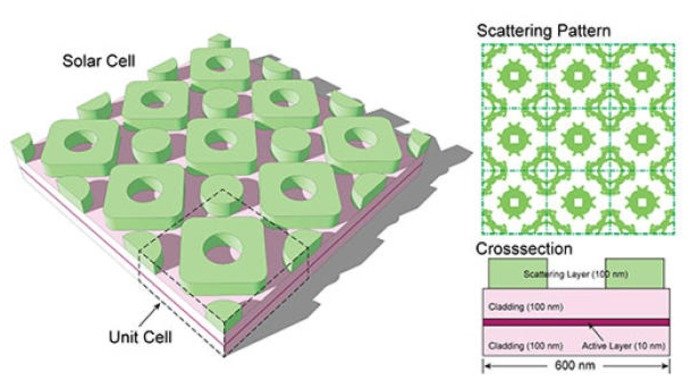EVANSTON, Ill., Jan. 25 (UPI) -- U.S. researchers say they've developed a new design for organic solar cells that could lead to more efficient, less expensive solar power.
Using a mathematical algorithm based on natural evolution, researchers at Northwestern University identified a specific optimal geometrical pattern for capturing and holding light in thin-cell organic solar cells, a university release reported Friday.















